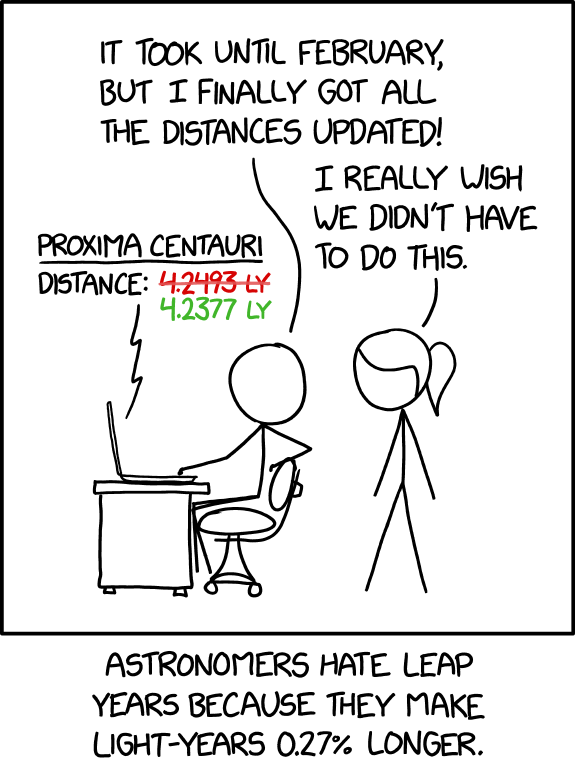this post was submitted on 22 Feb 2024
875 points (98.8% liked)
xkcd
9041 readers
69 users here now
A community for a webcomic of romance, sarcasm, math, and language.
founded 2 years ago
MODERATORS
you are viewing a single comment's thread
view the rest of the comments
view the rest of the comments

Well it's in fact easy to calculate...
To make it easier to visualize we'll start with year 400. From year 400 to year 799 you've got a leap year every 4 years except for years 500, 600, 700 and including year 400, so that's 25 leap years for the first century and 24 for the others.
So you've got 25 + (3x24) = 97 leap years
And 75 + (3 x 76) = 303 non leap years
(97 x 366) + (303 x 365) = 146097 days every 400 years which means a year is 365.2425 days long on average.
365.2425 x 24 = 8765.82 hours on average
8765.82 x 60 x 60 = 31 556 952 seconds per year on average
31 556 952 x 299 792 458 (speed of light per second) = a light year is 9460536207068016 meters long or 9460536207068.016 km long when adjusted to take leap years into consideration.
Okay, but now whenever you state one light year, it's just a normal year. When you state four, it is three normal ones and one leap year. So four times one light year would not equal four light years.
You asked for a lightyear adjusted based on leap years, I provided the number. It's a bit more than 365 light days and a bit less than 366 light days, it's closer to the real distance covered by light during the time the earth goes around the sun.
Edit: Don't know why anyone would downvote me for providing what OP asked for in the first place, especially when their reply didn't really make sense in the context...